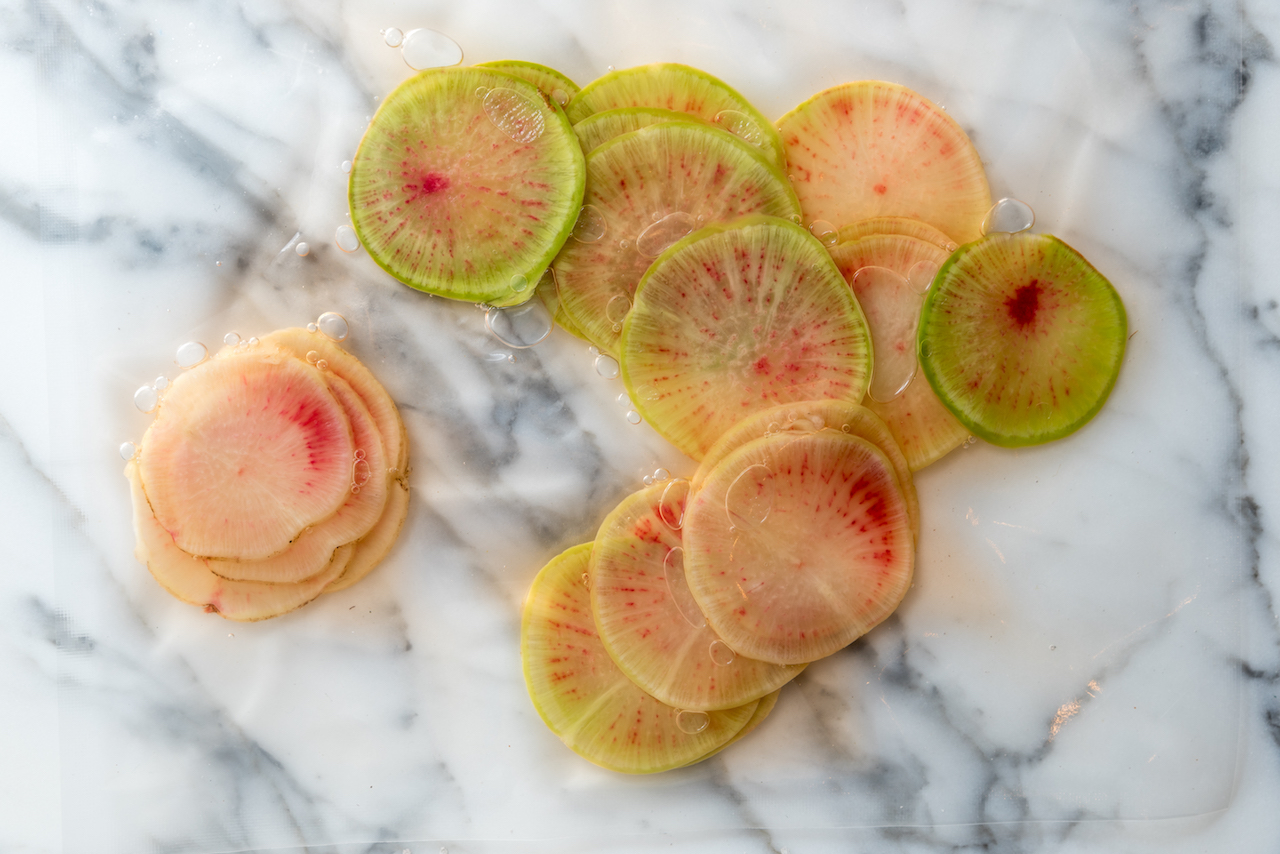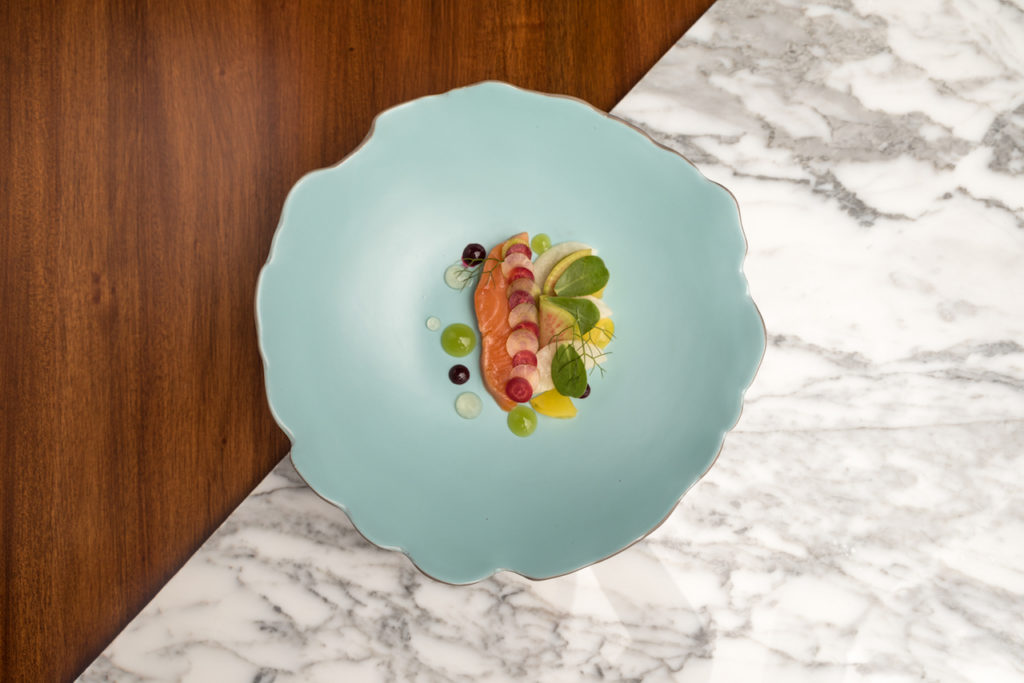Presently, chefs everywhere are trying to convince diners to enjoy pickled fruits and vegetables. On its own, it can be a hard sell but when served and plated with other items, consumers realize and appreciate what it brings to the table.
Apart from imparting a sweet and sour taste, food that’s been pickled allows for easier absorption of vitamins and nutrients due to the fermentation process. While salt, a key ingredient in the pickling liquid, prohibits bad microbes from forming colonies, it allows the good microbes to flourish, thanks to a process called diffusion.
Vinegar pickles require the addition of vinegar to bring down the pH level of the solution. Fermented pickles, on the other hand, rely on good germs to produce an acid, which, in turn, lowers the pH level. This requires good temperature, a little light and, above all, time.
At my restaurant, The Test Kitchen, we predominantly use a quick pickle process and depending on the ingredient, we can achieve an amazing texture and flavor within a window of just a few hours. A vacuum machine helps but is not necessary.
With only three ingredients (vinegar, sugar, and water), you can customize a pickle blend that suits your palate without having to worry about bad microbe growth.
Simple pickle solution
1 part vinegar
½ part water
½ part sugar
Depending on how sweet you like it, you can either add more or less sugar. The same goes for how sour you like your pickles: Add more vinegar to intensify the sourness or add more water to abate it. In addition, customizing your own pickling liquid is as easy as adding a few aromatic ingredients, which can include garlic, lemon zest, fresh herbs, black pepper, mustard seeds, and spices.
Hopefully, these tips and tricks will inspire you to grab a jar and start pickling. Or at least, be open to eating pickled foods when dining out.
Cured salmon with seasonal pickles
Serves 4
Prep time: 2 hours (2 days for the salmon)
Pickle liquid
200 ml distilled vinegar
200 grams sugar
100 ml water
a pinch of salt
Procedure
Bring all ingredients to a boil and stir to dissolve. Once dissolved, transfer to a clean pan/cambro and cool down. Use as needed.
For the vegetables
The choice is up to the creator, attempt to combine textures to create a balance to bite.
Procedure
- Slice vegetables thinly to ensure a quick pickle.
- Place in a bowl. Pour pickling liquid until covered.
- Place into a chiller to marinate for a couple of hours or overnight.
Pickle gel
Ingredients
100 ml pickle juice
3 grams agar-agar
Procedure
- Remove vegetables from the chiller and strain juice.
- Place the juice into a small pot and blend in agar-agar until fully dissolved.
- Bring liquid to 85°C and transfer to a container. Chill until solid.
- Once solid, blend with a hand blender until smooth.
- Transfer to a piping bag or squeeze bottle and reserve for plating.
Salmon
Ingredients
300 grams fresh salmon
100 grams sugar
50 grams salt
2 pieces juniper berries
Procedure
- Crush juniper berries with the back of a knife and combine with the sugar and salt.
- Cover salmon with this mixture and place onto a clean tray. Allow to cure for 2 days. Flip salmon every 8 hours to ensure a balanced curing process.
- Before serving, clean salmon in ice water. Slice to ½-inch thick.
Assembly
Place salmon in the center of the plate. Place pickled vegetables around it. Pipe the pickle fluid gel. Serve cold.
Originally published in F&B Report Vol. 14 No. 3






